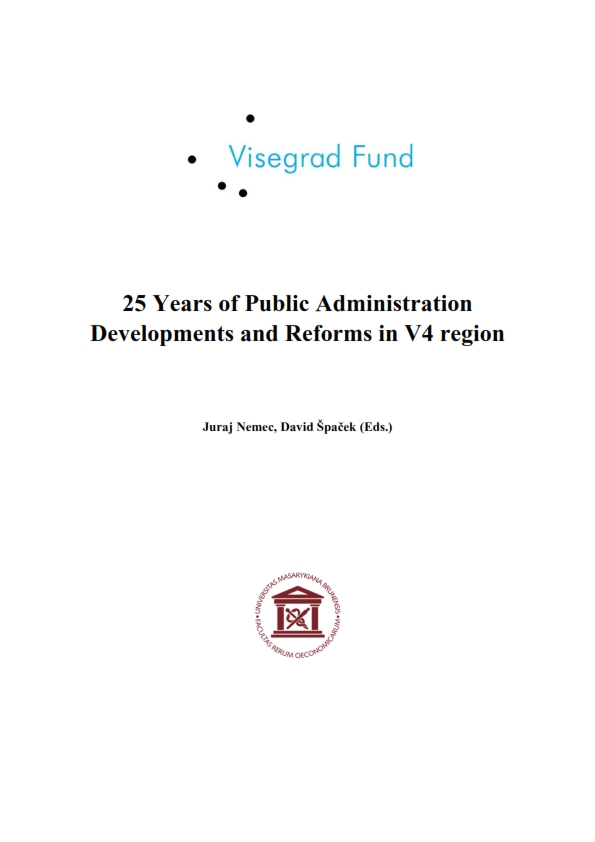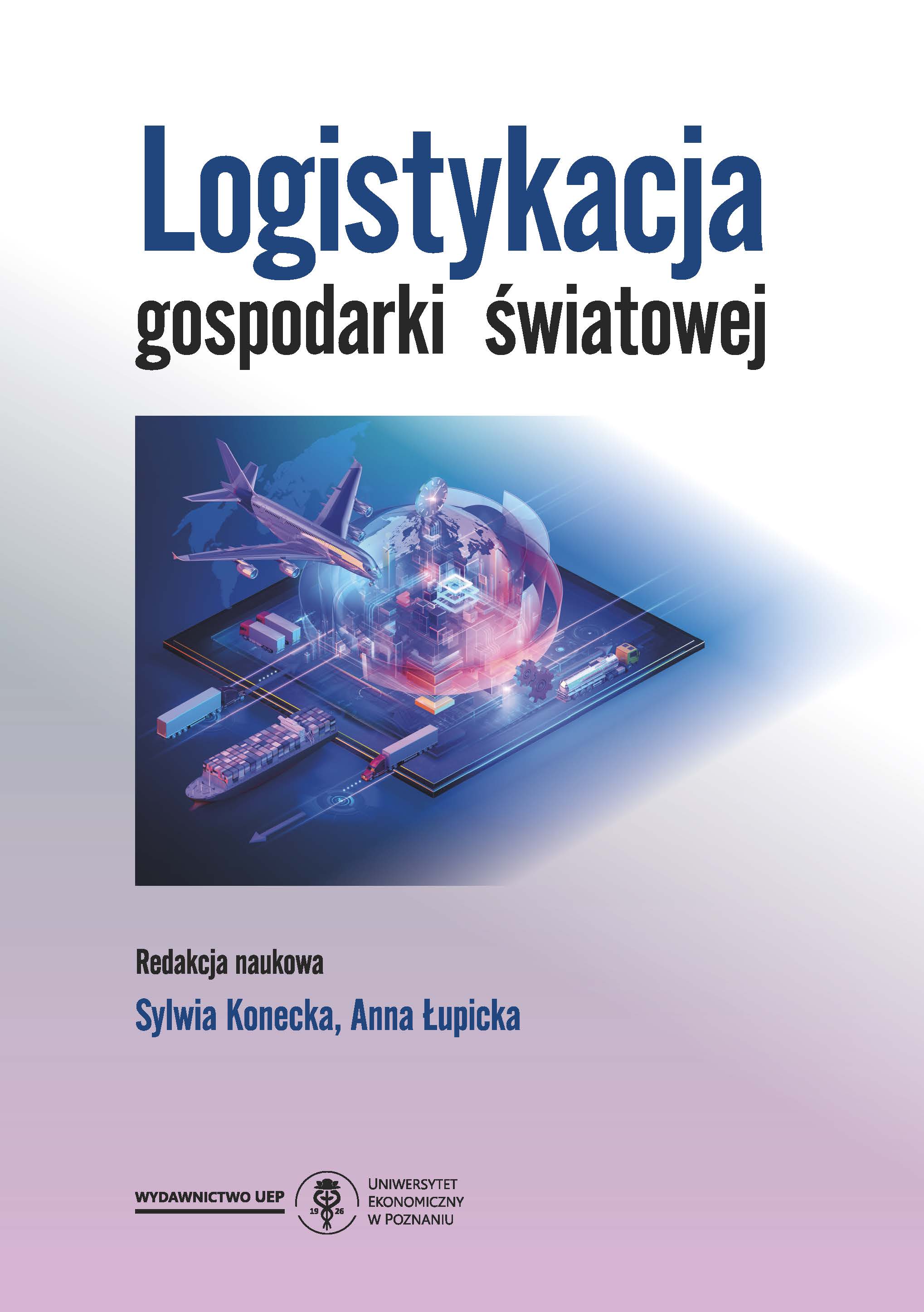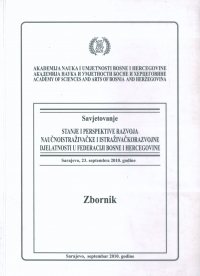
We kindly inform you that, as long as the subject affiliation of our 300.000+ articles is in progress, you might get unsufficient or no results on your third level or second level search. In this case, please broaden your search criteria.


Fundamental political and economic changes have taken place in the Czech Republic in the past quarter of a century. It is a relatively long period of time, during which all areas of life of society have been radically transformed, with public administration being no exception. The significant milestone of the country’s history was marked by the events of November 1989. The political, legislative, and economic changes – in a word “dismantling” – of the socialist state and its transformation into a democratic state relying on the market economy also required transformation regarding the perception of its role, activities of executive apparatus and institutions, nature and quality of public administration employees, and effectiveness of their work. And it is a very challenging and prolonged transformation that is not always absolutely clear. By analyzing the public administration development during the period, we should point out the key moments of its transformation and allow critical assessment of individual steps of various reforms, both planned and implemented. This is the only way to determine the pros and cons of the existing development and to indicate the trends of going forward.
More...
Over the last centuries, public administration in Poland shared the plight of the Polish state. Starting from around the mid-seventeenth century, Poland as a country has been losing the ability to sustain independence. At the end of the XVIII century, it lost sovereignty to Russia, Prussia and Austria (the so-called third partition of the country occurred in 1795). It regained its independence only after the First World War. The reason for the collapse of the state in 1795 is, among others, the fact that the ruling classes have failed to forge a modern model of public administration. There were many reasons for that. At the time the dominance of the nobility was a factor of great importance, especially when it comes to powerful magnates (active mainly in agriculture), who subordinated the state and its institutions as well as blocked the formation of professional civil service. Ruling circles of the day lacked the ability to produce modern state structures, including the ability to create the conditions for a professional clerical personnel. Not even the clear structures of the state were created (Bystroń 1976).
More...
Ca urmare a anexării Basarabiei la Imperiul Rus (1812), în această zonă a început un proces de modificare a structurii etnice a populaţiei Basarabiei, proces ce a fost amplificat de autorităţile ţariste prin politica colonizării teritoriului obținut. Acţiunile date s‑au răsfrânt şi asupra evoluţiei demografice a elementului grec de pe teritoriul Basarabiei.
More...
După eliberarea Basarabiei (26 iulie 1941) de către armatele româno-germane de sub ocupaţia sovietică de un an de zile, structurile Serviciului Special de Informaţii (S.S.I.), împreună cu celelalte organe ale statului, s-au reinstalat în teritoriul dintre Prut şi Nistru.
More...
Sharing resources is now a frequently discussed topic in the scientific discourse. The phenomenon of consumerism and globalization in the food market has led to the problem of wasting food. This is one of the greatest challenges we face today, especially in developed countries and their urban areas. Food sharing may be a solution to this problem. Foodsharing points, however, are only social initiatives, not systemic solutions. Based on the qualitative research – case study of the Metropolis of Upper Silesia and Zagłębie – the aim of the article is implemented, concerning the identification of available solutions for sharing food in cities and their assessment. This publication will be an introduction to further considerations in the field of organized food sharing in urban areas, which will contribute to enriching the concept of city management with solutions in the field of foodsharing.
More...
Based on the proGIreg case study, the potential use of neighbourhood-based nature-based solutions for urban regeneration is presented. The classification of the specific solutions of the project (compared to other classifications) will be presented, together with the critical conclusions on why NBS are relevant for the emerging new concept/approach of Biophilic Urbanism. One of the results of the applied research project is the Replication Toolkit - which aims to facilitate the implementation of Nature-based solutions for other cities. The Replication Toolkit contains a set of recommendations for the strategic component of urban regeneration of post-industrial neighbour-hoods, but also for the operational component of concrete implementation of solutions.
More...
Purpose: The aim of the study is to assess spatial cohesion of suburban areas in terms of balancing the volume of housing functions and accompanying functions in the gminas (communes) of the Poznań agglomeration in the years 2012–2016, based on the analysis of the functions of buildings under construction. Design/methodology/approach: The author has conducted the following tasks: reviewing the literature on suburbanisation processes, in particular in the Poznań agglomeration; performing a statistical analysis on the basis of data from Statistics Poland (GUS); assessing the volume of construction activity performing various functions in the area of the Poznań agglomeration; indicating the main function of newly constructed buildings and analysing measurable characteristics depicting the scale of construction activity, including the number and usable floor area of buildings or the number of dwellings (in the case of the residential function); assessing the relativised characteristics relating to the area and population numbers. Findings: The processes of suburbanisation and the implementation of the residential function are spatially diversified in the Poznań agglomeration. The balance of the housing and supplementary functions differs in individual gminas of the area under analysis. The relation between the usable area of newly completed buildings intended for non-residential purposes (supplementary functions) to the usable area of newly completed buildings intended for residential purposes in the Poznań agglomeration reflected the situation that took place all around Poland. The balance of the residential and supplementary functions depends on the following factors: the state of spatial development in the past (e.g. the presence of land that could be transformed for the needs of a new function), the existence of environmental or administrative development barriers (e.g. marshy ground, military training ground), thecurrent scale of the occurrence of individual functions (e.g. the degree of market saturationwith commercial space) or their location on important transport routes. Originality and value: In the face of the inevitability of the development processes, changing the spatial structure of areas surrounding large cities is a challenge for present and future generations, and in particular for local authorities. Even today, we may observe spatial changes affecting rural and rural-urban gminas neighbouring large cities. Under the pressure of the suburbanisation process, the developed residential function in such gminas forces them to take care of other functions that rural areas (so far unprepared to provide most ofthe functions characteristic of cities) perform or will perform in the future.
More...
Purpose: The aim of the study is to characterise and interpret the impact of the coronavirus pandemic (COVID-19) as an unexpected stimulus on the participants of the housing market. The research was designed not only to obtain knowledge about contemporary market trends (the cognitive aspect) but also to support market entities in shaping optimised investment and housing decisions (the practical aspect). Design/methodology/approach: The research is based on official statistical data describing transactions on the housing markets of two selected European countries and their cities – Poznań (Poland) and Varna (Bulgaria), in the period between 2018 and 2020. The methodology of comparative analysis has been applied to purpose fully selected case studies. Furthermore, the authors have drawn on the possibilities offered by the analysis of the activity and volatility of transaction prices on housing markets. Findings: The COVID-19 pandemic had a significant, yet short-term impact on the functioning of residential markets in Bulgaria and Poland in 2020 (based on Varna and Poznań). The dissemination of global information concerning the scale of the epidemic has most severely disrupted the activity on both the primary and secondary housing markets in Bulgaria. The secondary housing market in Poland reacted in a similar way, which resulted in a significant instability of the trend. The primary market in Poland turned out to be relatively most resistant to the stimuli related to the pandemic situation. What is common for both analysed countries and cities is a change in the shape of house price indexes in 2020 compared to 2018–2019. Originality and value: The research is a part of the contemporary trend of assessing the impact of atypical factors disrupting market trends. The COVID-19 pandemic disrupted the functioning of housing markets, forcing unprecedented global responses. The example ofthe comparative analysis of the two European countries presented in the article allows for indicating the directions and scale of rapid changes which reflect the process of sudden adaptation of societies to previously unknown conditions. Such analyses, which serve asex-post evaluation to some extent, allow for better preparation of specialists in the field of housing market activities to meet the needs created by unusual stimuli. They also allow for more effective planning of measures to mitigate the effects of market shocks in the sphere of housing.
More...
Aktualna globalna pozicija Bosne i Hercegovine potvrđuje nalaz prethodnih istraživanja da u našoj državi ne postoji jedinstven ili barem harmonizovan i efikasan inovacioni sistem, primjeren potrebama razvoja društva i ekonomije znanja. Prvi koraci u utvrđivanju razloga ovakvog stanja su SWOT analize položaja i uloge inovacionog sistema u okviru opšteg strateškog planiranja i sektorskog planiranja istraživanja i transfera tehnologije. Najvažniji rezultati dobiveni iz tih matrica su diskutovani u radu. Oni su potom uspoređeni sa rezultatima naših najnovijih istraživanja. Prvi rezultat je sažeta SWOT matrica inovacionog sistema. Rezultate razrade pojedinih faktora smo prikazali u detaljnoj SWOT matrici zasnovanoj na elementima snage. I ova matrica je pokazala da je ujednačeno i stabilizirano visoko obrazovanje najvažniji element snage inovacionog sistema. Zbog toga su obilježja univerziteta kao subjekta inovacionog sistema posebno razmotrena.
More...
The current global position of Bosnia and Herzegovina confirms the findings of previous research that in our country there is no single or at least harmonized and efficient innovation system, appropriate to the needs of the development of knowledge society and the knowledge economy. The first steps in determining the reasons for this situation are SWOT analyses of the position and role of the innovation system within the general strategic and sectorial research and technology transfer planning. The paper discusses the most important results of matrices obtained and compares them with the findings of our latest research. The first result is a concise SWOT matrix of the innovation system. The results of the elaboration of individual factors we present in a detailed SWOT matrix based on elements of strength. This matrix also showed that uniform and stabilized higher education is the most important element of the strength of the innovation system. Therefore, the paper specifically discusses characteristics of universities as subjects of the innovation system.
More...
One of the most enduring tensions in human history has been the clash between the East and the West. This is not simply a geographical division, but a difference in worldviews that has led to much conflict over the centuries. The East is often seen as mysterious and inscrutable, while the West is associated with rationalism and progress. These differing perspectives have led to clashes on everything from political ideologies to economic systems. Even today, there is a great deal of mistrust between the East and the West, with each side looking at the other with suspicion and misunderstanding. However, it is important to remember that there is far more that unites us than divides us, and that we can learn from one another if we are willing to open our minds. This article is an in-depth analysis of the differences in mentality between East and West and contributes to a better understanding and explanation of the current tensions and conflicts on the European border. The war in Ukraine is not only a military conflict but also the expression of an accumulation of tensions between different mentalities and cultural models.
More...

Mankind is at present at a crossroad, and this fact is valid from a political, economic and social viewpoint. Strong and opposed political and social forces, by the goals they seek, are engaged into a though competition, whose result will decide the way of life for several future generations. From the political point of view, the battle takes place between democracies, on the one hand, and the autocratic regimes, on the other hand. As for the economic and social aspects, the battle develops between the super-rich or the dominant class, and those who struggle to survive. Another facet of this last aspect is represented by the competition that is being carried out between the free market capitalism, combined with the liberal democracy, and the state capitalism, often associated with the illiberal or autocratic political regimes. This paper intends to present and explain the factors that underpin the success of the state capitalism, the way that free market capitalism and the state capitalism coexist at present, as well as the potential for conflict that can appear between the two models of capitalism, with its consequences for global stability. Understanding these aspects is important because the two models of capitalism support distinct models of development and security. We will be focusing more on the state capitalism because we consider that this represents an important force that will shape the global economy in a significant way during the following decades.
More...
Knjiga „Rodni stereotipi: Zvuči poznato?“ predstavlja veoma korisnu i interesantnu publikaciju koja nas suočava s predrasudama kreiranim oko pojmova roda i feminizma. U dvanaest tekstova prikazano je kako rodni stereotipi egzistiraju unutar društvenih i ideoloških matrica, ali i kako oni, u svakodnevnim i konkretnim situacijama, postaju sastavnim dijelom naših vlastitih zabluda. Realnost i konkretna patnja, koje se mogu prepoznati u brojnim navedenim životnim situacijama i pričama, djeluju kao žestok podsjetnik na teške i bolne sudbine žena na ovim prostorima, ali i kao koherentan i stručan materijal za edukaciju u oblasti rodnih studija i proučavanja rodnih stereotipa. U tom kontekstu, vrijednost ove knjige jest što na jednostavan način, prikazujući realne situacije, uključuje čitaoce u prepoznavanje takvih situacija te ih ujedno senzibilizira na pružanje otpora prihvaćenim i etabliranim rodnim stereotipima.
More...
If an individual believes that others will reciprocate their initial cooperative behaviour, it is rational for them to cooperate. Conversely, if they believe the opposite, cooperation would be seen as irrational and potentially dangerous. Low levels of trust in society have negative implications for quality of life, economic progress, and the functioning of public institutions. Surveys have revealed a prevailing lack of trust among the Polish population. Poles hold the belief that people are mainly driven by self-interest, implying that they anticipate others to engage in free-riding rather than altruism. The survey participants exhibit a low belief in reciprocation among those receiving benefits, suggesting a diminished desire to support others. Moreover, a significant portion of Poles still holds the view that receiving social benefits, excluding pensions, leads to changes in attitudes and behaviours, making beneficiaries less inclined to reciprocate to society.
More...
The Ethnoreligious World, National Security, and the Social Sciences explores the intricate relationship between ethno-religious dynamics, national security concerns, and the field of social sciences in contemporary society. This multifaceted discussion emphasizes the critical importance of maintaining ethno-religious harmony for the sake of social stability and national security. Additionally, it underscores the pivotal role played by social sciences in comprehending the origins of conflicts and their prevention. One specific subtheme, „The Role of Media and Information Technologies in Shaping Ethnic and Religious Perceptions and Conflicts“, delves into the impact of modern media and information technologies on the formation of ethnic and religious perceptions, as well as their potential to fuel or mitigate conflicts. This subtheme underscores the significance of analyzing how media and technology influence the ways in which people perceive and interact with diverse ethnic and religious groups, and how these influences can have profound implications for ethno-religious peace and national security. It also highlights the essential role of social sciences in studying and addressing these complex dynamics.
More...
Major climate changes, the growth of the world population to almost 8 billion, urban agglomerations, the ever-increasing need for housing and living space, are just a few elements that have led worldwide to the identification of urban policies aimed at solving, if not totally, at least partially, the problems facing the world today. Our study has as main goal to envisage the necessary transformations in medieval cities in order to adapt them to the new sustainability standards, with an emphasis laid on the need for an integrated and balanced approach in the ongoing process of transformation of medieval cities into sustainable cities. Starting from various bibliographic sources specialized in urban planning, architectural history and sustainable development, we intend to stress the importance of preserving urban identity in the present and future development process, by approaching several works regarding historic buildings, areas of cultural value and local traditions, essential to maintaining the link with the past and enriching the urban experience of residents and visitors. By implementing the right strategies and involving local communities, it is possible to create modern cities that provide a healthy and prosperous living environment for both current and future generations.
More...
In modern terms, entrepreneurship is a key factor for the development of economies and the increase of the well-being of society. In both developed and developing countries, entrepreneurship solves important economic and social tasks, such as reducing unemployment, increasing innovation activity, accelerating structural changes in the economy, regional development, and others. Entrepreneurial activity leads to the emergence of new business models that increase the productivity of economic agents in particular and the competitiveness of the economy as a whole.
More...
The evolution of the cyberspace domain and its accompanying management tools has ushered in a era characterized by the emergence of new forms of confrontation: cyber blockades and cyber sanctions. This development has paved the ways for enhanced capabilities in economic management, the expansion of diplomatic and trade relationships, and ultimately, the safeguarding of national interests at an unprecedented level. This paper presents the results of an analysis of these new categories, elucidating their interconnectedness, and highlighting the evolution and continued development of these two domains, particularly within cyberspace. The authors draw attention to the new dimensions of confrontation within the cyberspace realm, encompassing explicit and hidden threats to individuals, society, and the state.
More...